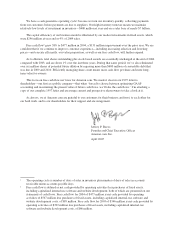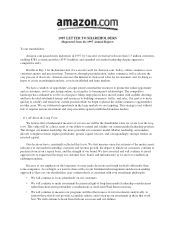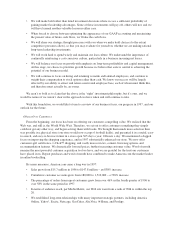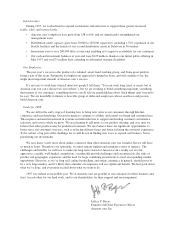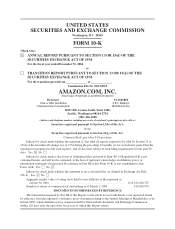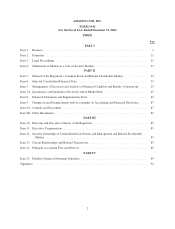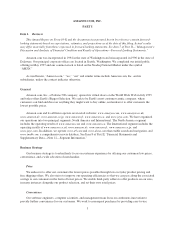Amazon.com 2004 Annual Report Download - page 15
Download and view the complete annual report
Please find page 15 of the 2004 Amazon.com annual report below. You can navigate through the pages in the report by either clicking on the pages listed below, or by using the keyword search tool below to find specific information within the annual report.Available Information
Our investor relations website is www.amazon.com/ir.Wemake available on this website under “Financial
Documents,” free of charge, our annual reports on Form 10-K, quarterly reports on Form 10-Q, current reports on
Form 8-K, and amendments to those reports as soon as reasonably practicable after we electronically file or
furnish such materials to the U.S. Securities and Exchange Commission (“SEC”).
Additional Factors That May Affect Future Results
The following risk factors and other information included in this Annual Report should be carefully
considered. The risks and uncertainties described below are not the only ones we face. Additional risks and
uncertainties not presently known to us or that we currently deem immaterial also may impair our business
operations. If any of the following risks occur, our business, financial condition, operating results, and cash flows
could be materially adversely affected.
We Have an Accumulated Deficit and May Incur Additional Losses
We have incurred significant net losses since we began doing business. As of December 31, 2004, we had
an accumulated deficit of $2.39 billion and our stockholders’ deficit was $227 million. We have incurred
substantial operating losses since our inception, and although we earned net income for the years ended
December 31, 2003 and 2004, we may incur losses again in the future.
We Have Significant Indebtedness
As of December 31, 2004, we had long-term indebtedness of $1.86 billion. We make annual or semi-annual
interest payments on the indebtedness under our two convertible notes, which are due in 2009 and 2010.
Although we made debt principal reduction payments over the last two years, we may incur substantial additional
debt in the future, and in any event a significant portion of our future cash flow from operating activities is likely
to remain dedicated to the payment of interest and the repayment of principal on our indebtedness. Our
indebtedness could limit our ability to obtain additional financing for working capital, capital expenditures, debt
service requirements, acquisitions or other purposes in the future, as needed; to plan for, or react to, changes in
technology and in our business and competition; and to react in the event of an economic downturn.
There is no guarantee that we will be able to meet our debt service obligations. If we are unable to generate
sufficient cash flow or obtain funds for required payments, or if we fail to comply with covenants in our
indebtedness, we will be in default. In addition, we may not be able to refinance our indebtedness on terms
acceptable to us, or at all.
See Item 8 of Part II, “Financial Statements and Supplementary Data—Note 4—Long-Term Debt and
Other.”
We Face Intense Competition
The market segments in which we compete are rapidly evolving and intensely competitive, and we have
many competitors in different industries, including both the retail and e-commerce services industries.
Many of our current and potential competitors have longer operating histories, larger customer bases,
greater brand recognition, and significantly greater financial, marketing, and other resources than we have. They
may be able to secure merchandise from vendors on more favorable terms and may be able to adopt more
aggressive pricing policies. Competitors in both the retail and e-commerce services industries also may be able to
devote more resources to technology development, fulfillment, and marketing than we do.
Competition in the e-commerce channel may intensify. Other companies in the retail and e-commerce
service industries may enter into business combinations or alliances that strengthen their competitive positions.
7


